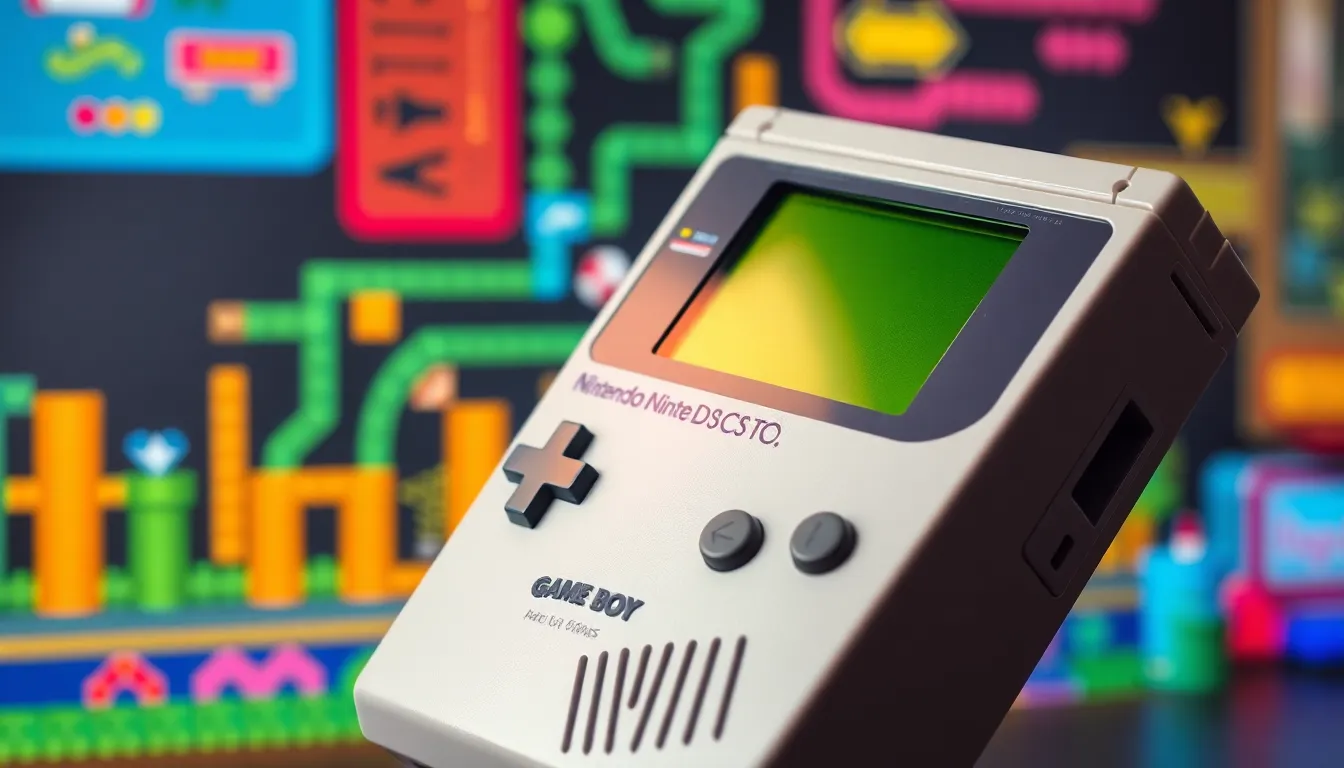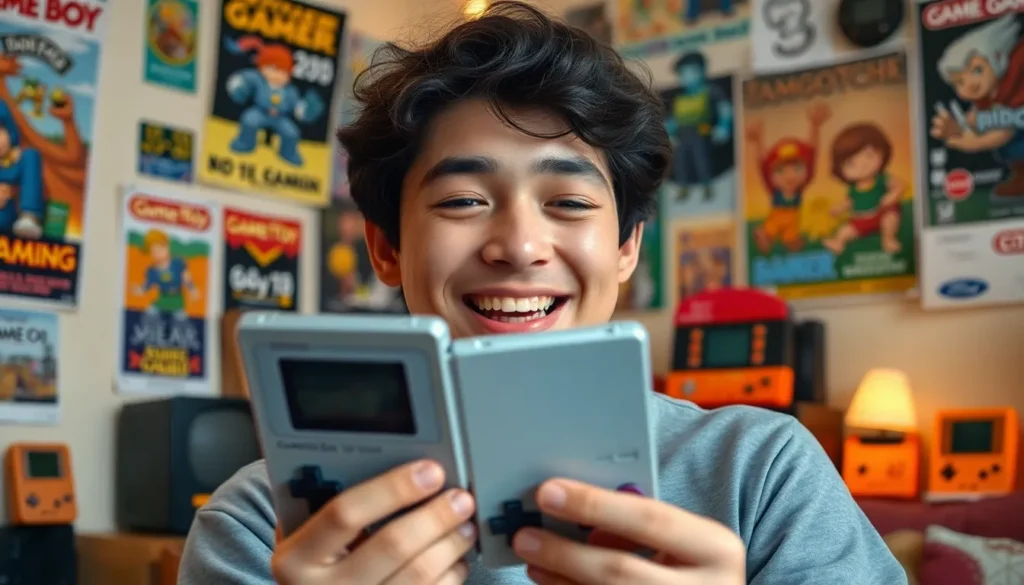Table of Contents
ToggleIn a world dominated by sleek smartphones and endless app stores, there’s something irresistibly charming about nostalgic handheld devices. Remember the satisfying click of a Game Boy or the thrill of beating your friend’s high score on a Tamagotchi? These relics of the past not only sparked joy but also created unforgettable memories.
Overview of Nostalgic Handheld Devices
Nostalgic handheld devices deliver a unique charm that appeals to many, drawing connections to simpler times. Devices like the Game Boy and Tamagotchi dominated the late 20th century, creating memorable experiences for users. Game Boy, launched in 1989, introduced portable gaming, allowing players to enjoy titles like “Tetris” and “Pokémon” anywhere. Tamagotchi, released in 1996, captivated youth with its virtual pet concept, requiring care and attention.
Screens on these devices often featured pixelated graphics, which contributed to their distinct appeal. Surprisingly, their limitations sparked creativity, encouraging players to fully engage with the content. With minimalistic designs, these gadgets are portable, making them easy to carry. The tactile feedback of buttons also provided a satisfying experience that many still remember fondly.
Cultural significance of these devices remains evident in today’s nostalgia-driven market. Merchandise and reissues frequently emerge, rekindling interest for both older generations and newcomers. Events like gaming conventions celebrate these retro gadgets, showcasing their enduring popularity. Communities also form around discussions and sharing experiences tied to these devices.
Manufacturers recognize the demand for retro devices, leading to the resurgence of remakes and special editions. For instance, Nintendo’s re-releases of Game Boy titles on modern platforms maintain engagement with long-time fans. Tamagotchi has also seen updates, adapting to current digital trends while retaining core mechanics.
Nostalgic handheld devices encapsulate a specific era in gaming history, reminding users of the joy they once provided. These gadgets, despite evolving technology, continue to shine as beloved symbols of gaming culture.
Evolution of Handheld Gaming

Handheld gaming devices evolved significantly from their early beginnings, shaping how players experience games on the go.
Early Devices: Pioneers of Portable Gaming
In the late 1970s, handheld gaming started with devices like the Microvision. This early console allowed players to swap cartridges, a novel feature at the time. Notably, it paved the way for future handheld technology. Additionally, Nintendo’s Game Boy, released in 1989, marked a turning point in portable gaming. It featured interchangeable game cartridges and a battery life that exceeded its competitors. Players enjoyed classic titles like Tetris and Super Mario Land. Simple, pixelated graphics became a defining feature, fostering creativity and imagination, which attracted a massive audience. Such innovations ignited a passion for handheld gaming that continues to resonate today.
The Rise of 16-Bit Consoles
The early 1990s heralded the introduction of 16-bit handheld consoles. The Sega Game Gear debuted in 1990, boasting color graphics and a larger screen. This device aimed to compete directly with the Game Boy but faced challenges due to battery consumption. Meanwhile, the Nintendo Game Boy Advance, released in 2001, brought a significant leap in graphical capabilities and game complexity. Gamers embraced its enhanced processing power, leading to more immersive experiences. Classic franchises like The Legend of Zelda and Metroid found renewed life on this platform. As a result, 16-bit devices solidified handheld gaming’s place in the entertainment landscape, encouraging developers to innovate and expand the gaming universe.
Popular Nostalgic Handheld Devices
Handheld devices evoke fond memories of gaming, providing unique experiences across generations. Several iconic models still spark nostalgia among enthusiasts today.
Game Boy: A Cultural Icon
Game Boy revolutionized portable gaming upon its 1989 launch. Tetris and Pokémon became classic titles, largely contributing to its iconic status. Simple pixel graphics resonated with gamers, encouraging creativity while providing entertainment on-the-go. Long battery life made it ideal for lengthy gaming sessions. The introduction of various iterations, like the Game Boy Color, further enhanced its legacy. Collectors cherish these devices, as their impact remains evident in modern gaming.
Sega Game Gear: The Colorful Contender
Sega Game Gear entered the market in 1990, presenting a colorful alternative in handheld gaming. Its vibrant screen captivated users, offering a range of titles, including Sonic the Hedgehog. Compact design allowed for portability, fitting easily into pockets. Though it struggled against the Game Boy’s dominance, impressive graphics stood out during its time. Memorable games and accessories, like the TV tuner, added to its appeal, making it a beloved choice among fans.
Atari Lynx: The First Color Handheld
Atari Lynx debuted in 1989, recognized as the first color handheld gaming console. This innovative device featured a backlit display, enhancing gameplay visibility during dim conditions. Titles like Rampage and Cliffhanger showcased the Lynx’s capabilities and helped build an eclectic library. Despite its advanced features, marketing challenges limited its commercial success. Retro gamers appreciate the Lynx for its pioneering role in the handheld gaming landscape. Its unique design and features still garner admiration today.
The Impact of Nostalgic Handheld Devices on Gaming Culture
Nostalgic handheld devices continue to shape gaming culture, influencing design and gameplay. They serve as a reminder of simpler times while inspiring modern game developers. Devices like the Game Boy introduced essential mechanics that remain prevalent in today’s mobile games. Retro aesthetics and sound effects find their way into contemporary titles, creating a bridge between past and present gaming experiences. Their user-friendly interfaces encourage creativity and invite players of all ages. Handheld gaming’s legacy resonates, ensuring it remains relevant as technology evolves.
Influence on Modern Gaming
Modern gaming benefits from the innovations of nostalgic handheld devices. Game mechanics established in devices like the Game Boy influence mobile and console games today. Many genres owe their popularity to the simplicity and accessibility of these vintage gadgets. The focus on tactile feedback in gaming mirrors the button designs found in early handheld systems. Furthermore, multiplayer capabilities introduced by these devices paved the way for today’s online gaming experiences. Essential game elements trace back to the creativity inspired by older devices.
Resurgence in Popularity: Retro Trends
Retro trends highlight the enduring appeal of nostalgic handheld devices. Gamers, both old and new, embrace reissues and merchandise celebrating these classic gadgets. Companies like Nintendo capitalize on this interest by re-releasing popular titles from the past. Events showcasing retro games attract large crowds eager to relive their childhood memories. Additionally, platforms that support indie games often draw inspiration from the aesthetics of vintage gaming. These cultural phenomena foster connections among gamers, ensuring that handheld devices remain significant in the evolving landscape.
Nostalgic handheld devices hold a special place in the hearts of many. They represent a unique blend of simplicity and creativity that modern technology often overlooks. The joy these gadgets brought during their prime continues to resonate today, bridging generations and fostering a sense of community among enthusiasts.
As the gaming landscape evolves, the influence of these vintage devices remains evident. Their designs and gameplay mechanics inspire current innovations while reminding players of the joy found in simpler times. The resurgence of interest in retro gaming signifies that these handheld classics are more than just relics; they’re cherished symbols of a beloved era in gaming history.







